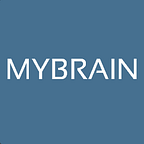Learning How to Learn, Part Two
This is Part Two of Learning How to Learn.
In Part One, we covered how chunking relevant pieces of information together, and then using these chunks to form new associations is a foundation for new learning. We also reviewed the concept of focused versus diffuse thinking, with the ability to alternate between these thinking styles resulting in a better flow of learning.
We now move on to a major stumbling block for actual learning:
Procrastination: A Bad, Yet Strangely Useful Habit
To procrastinate is to be human. Procrastination helps us avoid anxiety and negative feelings in our lives — things like deadlines, term papers, employee reviews, tax returns, etc.
Procrastination rewards us temporarily with a little shot of dopamine when we indulge in a diversion, rather than focus on the task in front of us. Our dopamine reward system is part of the brain’s ancient limbic system, which is interested only in the “here and now” rewards, rather than long term planning.
This meme captures the essence of the struggle between our conscious intentions to focus on work and study, versus the ever present pull towards procrastination:
Instant Gratification Monkey vs. Rational Decision Maker (Credit: WaitbutWhy.com)
The solution to this dilemma is to co-opt your inner monkey, and reach a truce: they routinely get a little bit of what they want, and you (the conscious, rational decision maker) get to focus a bit longer on study and work tasks.
So, how to make this happen?
The Pomodoro Technique
The concept behind the Pomodoro Technique is to use time as your supportive, valuable ally. This means you are not “racing against the clock”, but that you are structuring small increments of time for both work and distractions.
The standard pomodoro time increments are 25 minutes of focused study/work, with a 5 minute break. This 25 minute/5 minute ratio will be somewhere between excruciating and impossible for most people, especially at the start. A better way is to ease into this new world of time:
1. You (Rational Decision Maker): 10 minutes of work/study
2. Instant Gratification Monkey: 5 minutes of fun distraction: monkey gets his banana and play time.
3. Repeat
The key to making this time structure workable is to use an actual timer. We suggest using a separate physical timer, rather than your phone — there are way too many temptations lurking behind the timer on your phone. Once the 10 minute/5 minute ratio seems easy, bump it up to 15 minutes/5 minutes, and go from there.
Credit: Francesco Cirillo, The Pomodoro Technique.
Using Metaphors and Analogies to Speed New Learning
Metaphors and analogies activate prior knowledge, and are a good way to learn new information. Use this free metaphor and analogy graphic organizer to link familiar concepts to new concepts.
A Note on Sleep and Exercise
Pulling all-nighters is the worst way to learn. True learning requires memory consolidation, a process that happens mainly during sleep. Lack of sleep also raises levels of the stress hormone cortisol and amyloid beta protein in the brain, both of which are bad for brain health.
Physical exercise raises levels of the neurotrophic factor BDNF, which helps the brain grow new neural connections — which supports new learning. Leave time during the day for a couple of 20 minute walks at the least; your brain will thank you.
More at: www.mybraintest.org
